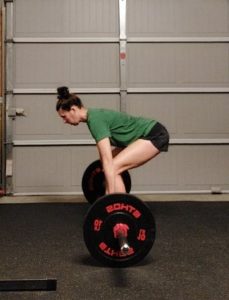Running is hard. Regular training can leave it beat up. It’s called progressive overload and it’s the process of constantly challenging our bodies in new ways to perform better on race day. To reap the benefits of that hard work, however, we need to recover. That’s where the ever needed rest day comes in. Included in any quality training plan, here are five reasons to give yourself a day off.
Reflect. Taking a rest day gives you an opportunity to review your block of training. You can  decide if you liked something, didn’t like it, did it well or had an ugly workout. Knowing what made each session great or not-so-great will help you adjust your plan. Then you can adjust and move forward in a positive way.
decide if you liked something, didn’t like it, did it well or had an ugly workout. Knowing what made each session great or not-so-great will help you adjust your plan. Then you can adjust and move forward in a positive way.
Recover. Pushing yourself during workouts is necessary for improved performance. Easy days are a must, too. Each workout creates micro tears in muscle fibers that need to be repaired and along with those beat up muscles go tendons and bones. Blood flow to tendons is a lot less than to muscle and they take longer to recover. Bones likewise get damaged and need to rebuild from being landed on thousands of times. A day off can be a big boon for avoiding tendonitis, stress fractures and any other over use injury.
Balance. Every workout produces a stress hormone called cortisol. Too much is a bad thing. Rest days, or even just a nap, can help get cortisol levels back in balance so you feel fresh for the next session.
Adaptation. Not only does a rest day let your muscles repair damage, it repairs them better than they were before. Allowing your body to heal is when it builds those more powerful muscles, stronger bones and tougher tendons.
Learning to listen. Do you feel good after your rest day? Experience a boost in performance? Great! You nailed it. On the other hand, if you still feel tired or unreasonably sore after one rest day, take another. Listen to your body. An extra rest day will never derail your entire training cycle. It’s better to be 10% under trained than 1% over trained.
Train smarter, not harder.
Coach Meredith

 Spinning or cycling is a fun alternative to hitting the track and it’s also a great way to work on increasing your cadence. A higher cadence means more efficient running and the bike is a perfect place to get your legs used to moving faster. Cycling with tension uses leg muscles similarly to running uphill without the impact, reducing risk of an injury while building strength. Hit the trails on a mountain bike or join a spin class to reap the benefits.
Spinning or cycling is a fun alternative to hitting the track and it’s also a great way to work on increasing your cadence. A higher cadence means more efficient running and the bike is a perfect place to get your legs used to moving faster. Cycling with tension uses leg muscles similarly to running uphill without the impact, reducing risk of an injury while building strength. Hit the trails on a mountain bike or join a spin class to reap the benefits.